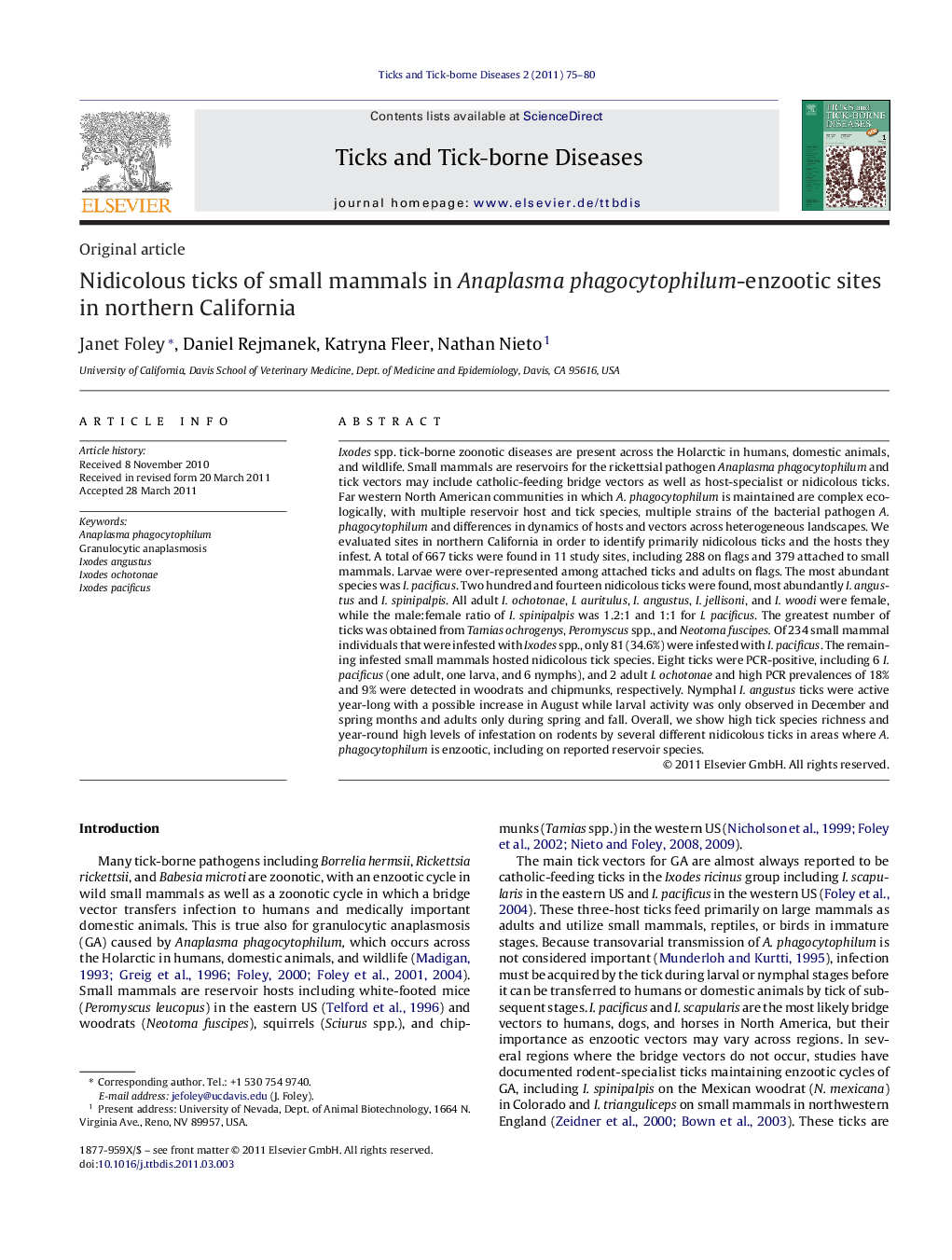| کد مقاله | کد نشریه | سال انتشار | مقاله انگلیسی | نسخه تمام متن |
|---|---|---|---|---|
| 2474063 | 1113112 | 2011 | 6 صفحه PDF | دانلود رایگان |

Ixodes spp. tick-borne zoonotic diseases are present across the Holarctic in humans, domestic animals, and wildlife. Small mammals are reservoirs for the rickettsial pathogen Anaplasma phagocytophilum and tick vectors may include catholic-feeding bridge vectors as well as host-specialist or nidicolous ticks. Far western North American communities in which A. phagocytophilum is maintained are complex ecologically, with multiple reservoir host and tick species, multiple strains of the bacterial pathogen A. phagocytophilum and differences in dynamics of hosts and vectors across heterogeneous landscapes. We evaluated sites in northern California in order to identify primarily nidicolous ticks and the hosts they infest. A total of 667 ticks were found in 11 study sites, including 288 on flags and 379 attached to small mammals. Larvae were over-represented among attached ticks and adults on flags. The most abundant species was I. pacificus. Two hundred and fourteen nidicolous ticks were found, most abundantly I. angustus and I. spinipalpis. All adult I. ochotonae, I. auritulus, I. angustus, I. jellisoni, and I. woodi were female, while the male:female ratio of I. spinipalpis was 1.2:1 and 1:1 for I. pacificus. The greatest number of ticks was obtained from Tamias ochrogenys, Peromyscus spp., and Neotoma fuscipes. Of 234 small mammal individuals that were infested with Ixodes spp., only 81 (34.6%) were infested with I. pacificus. The remaining infested small mammals hosted nidicolous tick species. Eight ticks were PCR-positive, including 6 I. pacificus (one adult, one larva, and 6 nymphs), and 2 adult I. ochotonae and high PCR prevalences of 18% and 9% were detected in woodrats and chipmunks, respectively. Nymphal I. angustus ticks were active year-long with a possible increase in August while larval activity was only observed in December and spring months and adults only during spring and fall. Overall, we show high tick species richness and year-round high levels of infestation on rodents by several different nidicolous ticks in areas where A. phagocytophilum is enzootic, including on reported reservoir species.
Journal: Ticks and Tick-borne Diseases - Volume 2, Issue 2, June 2011, Pages 75–80